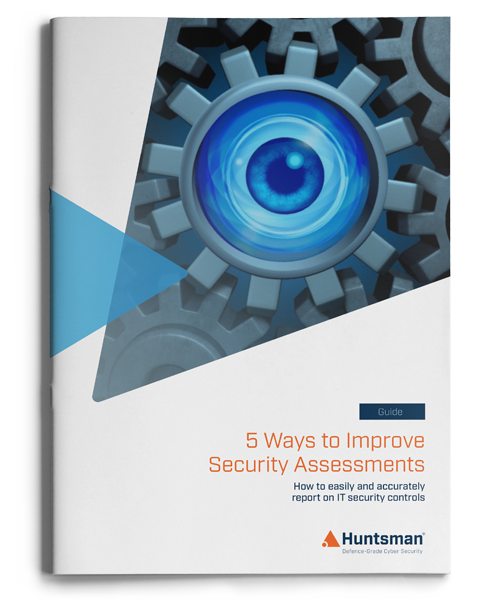Despite many of the disruptions caused by COVID-19 over the last 12 months it remains vital that organisations maintain their cyber security governance. Maintaining security defences and avoiding security vulnerabilities will hopefully prevent the unwelcome attention of auditors and regulators; or worse a successful attack by hackers.
In particular, as the COVID-19 pandemic hopefully begins to subside, there is likely to be an uptick in audit and oversight activity as assurance programmes seek to catch up from the abnormal 2020 reporting period. We expect to see a renewed focus from regulatory authorities too, seeking assurances of sound security and privacy control systems, from both businesses and their supply chains. The recent widespread breach of US government institutions is likely to encourage that sentiment.
Avoiding security vulnerabilities
Businesses that lose focus on security governance, cyber defences, privacy and control are almost inviting hackers to exploit any vulnerabilities in their systems. A hacker might, for example, hunt for organisations with missing patches, or known security configuration weaknesses.
Keeping on top of your security can be a challenge, particularly during ‘COVID normal’, but it doesn’t take much for an attacker to leave the security team or security manager in an embarrassing ‘please explain’ position.
No one likes to be audited, but it could be worse
Audits can be expensive and time consuming, particularly if the scope of assessment is significant. For the person being audited it is intrusive and less than flattering, particularly if the findings are poor.
The auditor’s job is to provide assurance and find issues; and they always will. So, if they are not careful, security teams can endure the duress of the audit process only to find that when the report arrives it adds even more insult to injury. The good thing is that this is an avoidable problem.
Post-pandemic audit
The stop-start nature of COVID-19 restrictions may have lulled some of the business world into cyber governance complacency.
Organisations everywhere need to be reminded of the significant risks faced by the rapid moves to home working, cloud storage, on-line storefronts, apps and the installation of new digitised systems and services in 2020. We already know that CISOs’ focus has shifted from network to endpoint security practices as they struggle to adapt to changing work arrangements.
This change in focus has exacerbated the already acknowledged need for visibility and monitoring of security controls to achieve a satisfactory oversight of cyber governance. All too often these shortcomings only come to light when data is stolen, a breach is reported or a bad audit report is published.
Slowing of the pandemic will bring greater scrutiny
Given that cyber security risks have increased during the pandemic we need to understand that the delivery of secure operations is more complex. With that in mind regulators, conscious of these increased operational risks for many businesses and their supply chains, are looking to re-assess cyber security maturity levels across key industries with audits to be revisited for many sectors for the new year.
The management of more diverse endpoints, with more staff now working from home, will impact security efficacy. Security teams with less visibility of IT systems and a reduced ability to assure the integrity of security controls of their networks, and those of their 3rd party suppliers, may have cause for concern.
Beating the auditor/hacker/regulator to find security vulnerabilities
So how can security teams avoid the indignity of a failed audit? Explaining poor findings, addressing detected security vulnerabilities, or explaining to the board (or worse, the regulator) what led to a loss of data are all situations to be avoided.
For peace of mind, it comes down to gradual improvement. It’s like getting fit, you do it gradually, testing the state of security of your environment with periodic trial audits. That way you can assess the ‘fitness’ of your security controls ahead of time, progressively mitigating the low hanging fruit identified in trial audits so as to (i) eliminate any surprises for an auditor to find; and (ii) improving the overall maturity of your security controls in the process. When that’s done, you’re ready for a formal audit.
There is a pretty standard set of controls that are likely to trip you up every time. Collectively they’re sometimes called your ‘cyber hygiene’, and any cyber security professional can provide you with a list for your attention.
Australian authorities have already derived that list into their Essential 8 cyber security framework which lists, in priority, the most frequently exploited controls and how to improve them. That is part of the reason why these controls form the basis of Huntsman Security’s Essential 8 assessment solutions. The ethos is to check (and assure) the effectiveness of these controls in order to improve cyber security, and as a result lessen the likelihood of attack. This is where we can help; we’ve assisted many organisations to demonstrably improve and maintain a better cyber posture.
Prizes for second place
There are always security vulnerabilities to stay on top of, so if you have a means of finding and fixing them before the audit, that’s ideal. It means you can be ahead of an auditor rather than having that difficult conversation about how and why the horse already bolted. If you have a process that progressively checks your security controls as part of pre-audit procedures you can significantly reduce your risk and save time even if only to collate evidence and data to investigate an unsatisfactory audit result.
It’s true that regulators may take a lenient view for businesses where breaches have occurred as a consequence of the pandemic; but as time progresses it is equally likely that they may feel that businesses have had more than enough time to deal with these issues.
Of course, regulatory scrutiny and penalties are a worst case – it may be that the immediate impact of poor IT risk management ceases at indirect losses or even reputational damage; or depending on its nature it might involve regulators. Whatever the consequence of poor security governance the likely impact of repeat offences is bound to become more costly.
It’s better to know your weaknesses
Knowing that your security controls are working effectively is an important achievement. It means a more robust risk management culture; knowing where there are gaps provides the security team with an opportunity to prioritise risk mitigation efforts for more effective safeguards.
Equally important is establishing a means by which you can measure the effectiveness of your security controls. One way, of course, is to wait for an attack and then yell ‘mea culpa’ and seek clemency; a second is to wait for vulnerabilities to be publicly revealed by an auditor.
If these risk identification and vulnerability assessment techniques seem too reactionary there is a solution that can help. Using a Huntsman Security vulnerability assessment tool, it’s entirely possible for you to identify security control gaps in your IT security and fix them before they can be found by someone else; an attacker or even an auditor.
To find out how Huntsman Security’s solutions help with this approach, contact us for a consultation or demo.
 About Huntsman
About Huntsman


